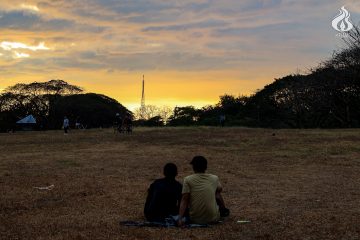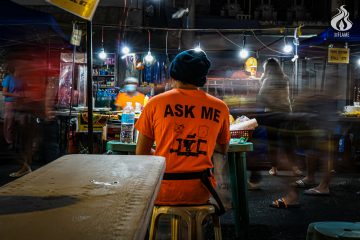By CORHEINNE JOYCE B. COLENDRES

WHEN THE haze clears in a city, everything stays the same. There are the same high-rise buildings that are surrounded by traces of poverty, and the same densely-populated areas with their people either basking in their riches or wiping their tears with their rags. The fog that envelops the city becomes an irony—rather than blurring the cityscape, it clears the city to show its truth: that after all that smoke, the city stays the same.
This concept is where Hamog is built on, and the idea is further expressed in the story of four street children who are suddenly thrown into interlacing situations where they are forced to act greater and bigger than their age. Their world has finally expanded—it has ceased to become about the money that they stole, or where they had to sleep at night. They now face a situation that is much bigger than themselves—a situation where their lives will finally begin.
Split into two narratives, the story is first told through Rashid (Zaijian Jaranilla), a young Muslim boy who had to organize a funeral for his best friend. It then picks up to the story of one of Rashid’s friends, Jinky (Therese Malvar), who is forced to work as a maid in a problematic household.
As the story progresses, the audience sees an uncanny development among the characters; they are far from the children who they first saw in the initial half of the film, yet they have not strayed from their path. It seemed as if the children descended deeper in the chasms of their own darkness. They are no longer the kids breathing the scent of rugby, or the petty thieves who loiter around the streets of Manila in broad daylight.
The children have learned how life worked and they are paddling across its current, and all they can do is to either drown with the current, or fight their way up to keep themselves afloat.
With its shifting storylines, and with its fast-paced sequences, Hamog gives a feeling that the film is more real than what it should be. As every sequence of the film builds up, the scenes start to become more stable. Rashid becomes calmer in dealing with various situations and Jinky’s movements become surer. The film takes great care and subtlety in the progression of the characters, almost as if hinting how the children have become more certain of their decisions, or of who they became after facing circumstances that have changed their lives entirely.
Set in the streets of Manila, Ralston Jover’s entry to the Pista ng Pelikulang Pilipino, Hamog, is an elegy to the city’s irony. The film forks down into two paths; that despite the problems that plague society, some people still strive to make a difference while others may choose to keep doing what they have done from the beginning. The film establishes the thought that the definition of change is flexible. Hope sparks for those who foster it, and a greater problem brews if ‘change’ is used for something worse. F



